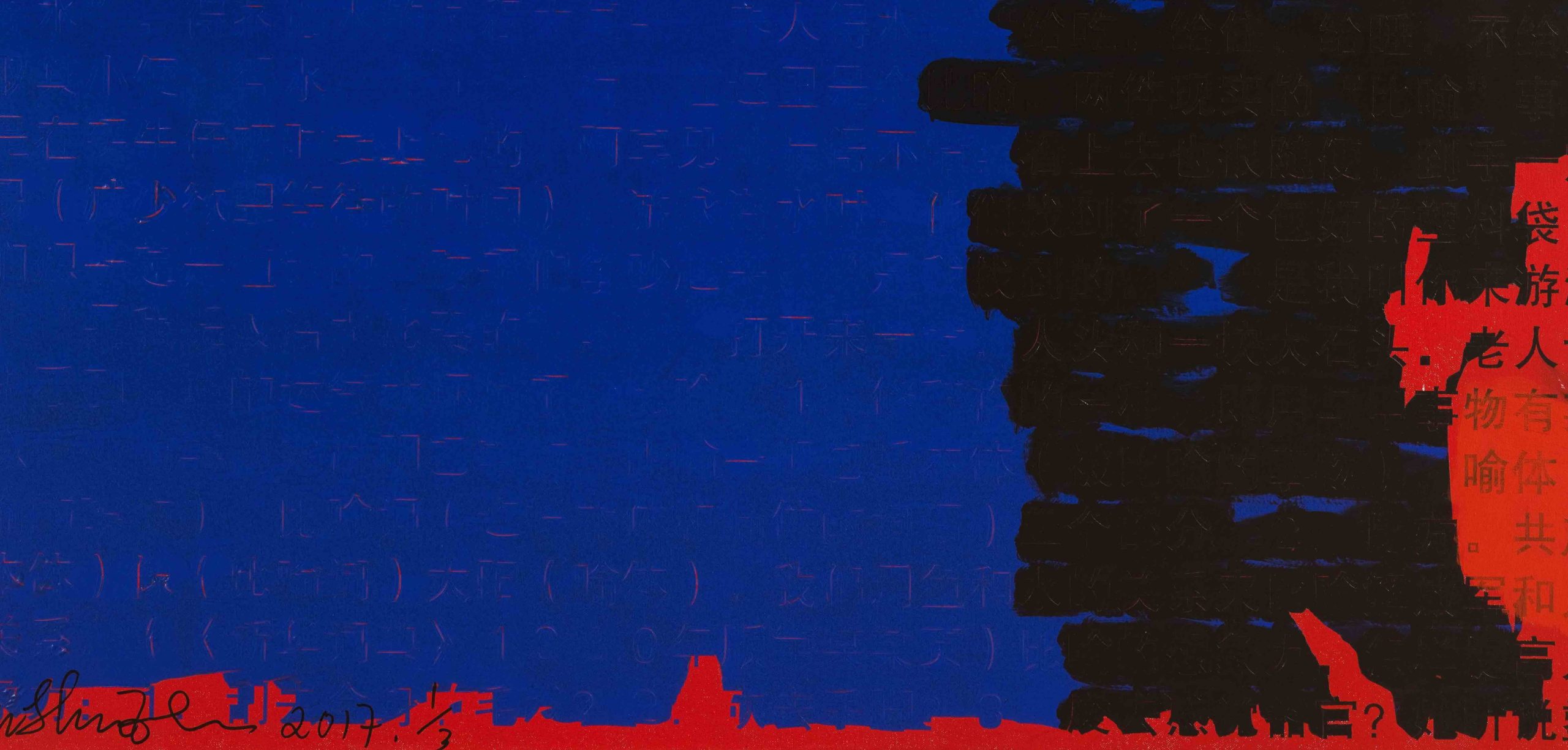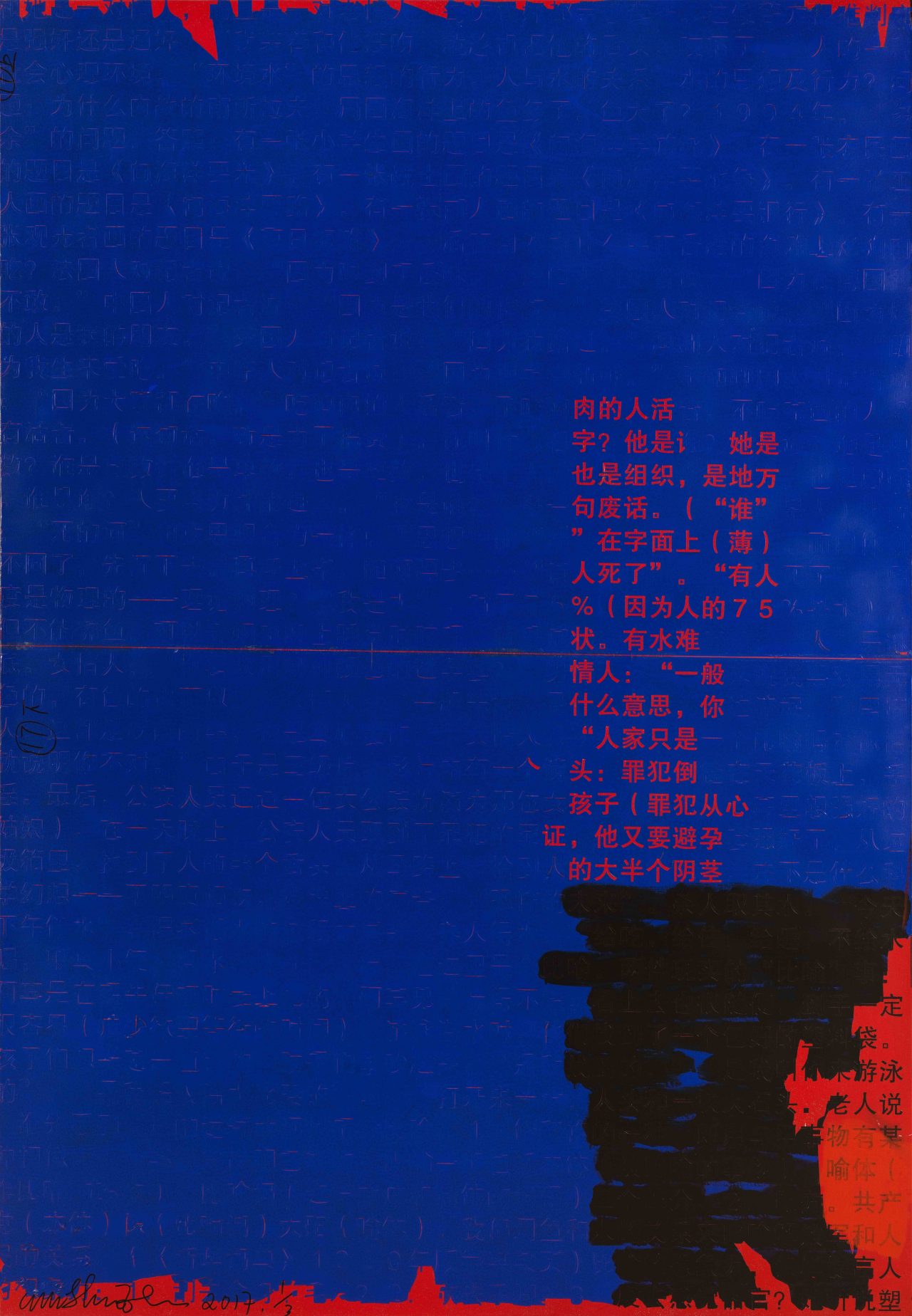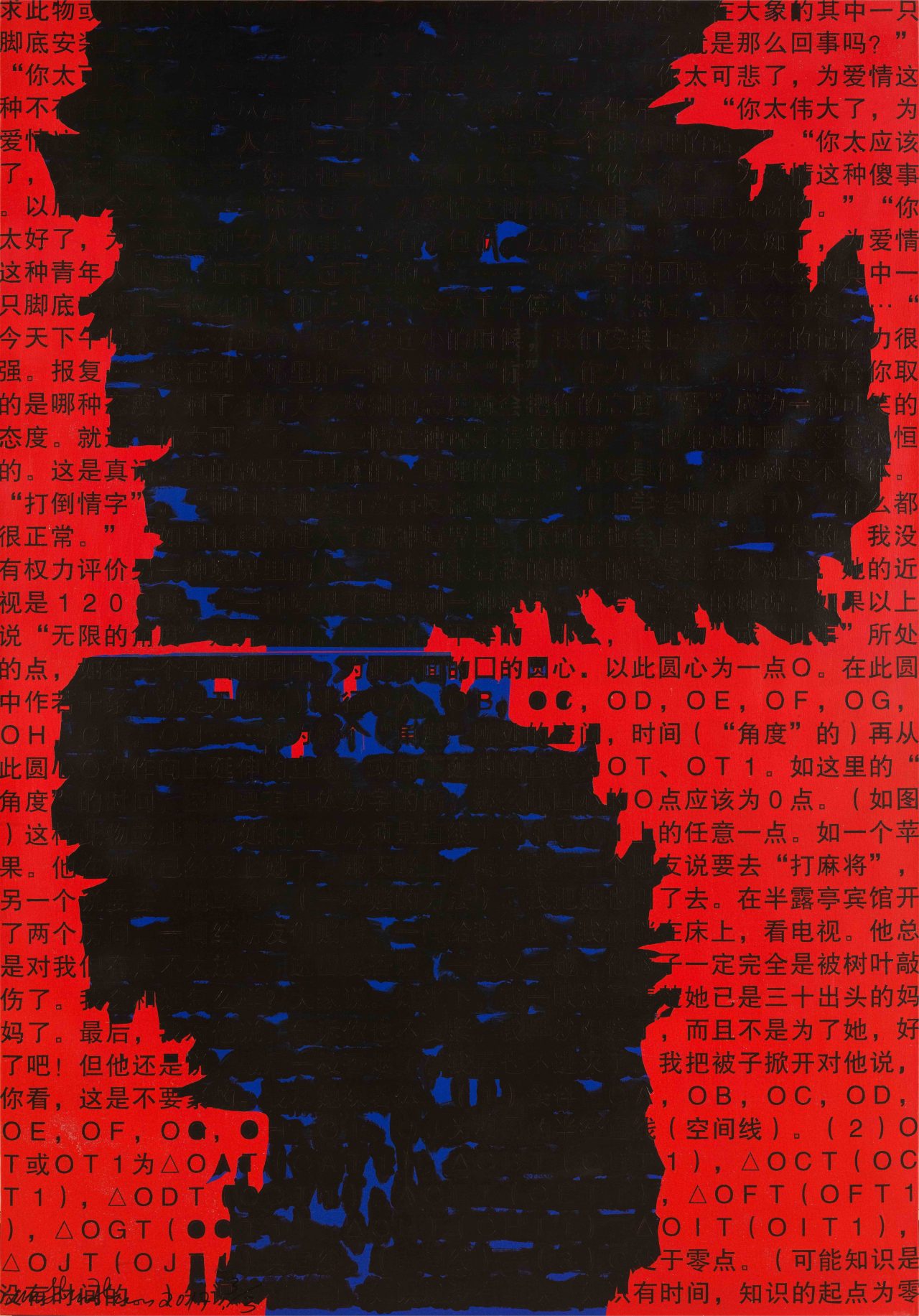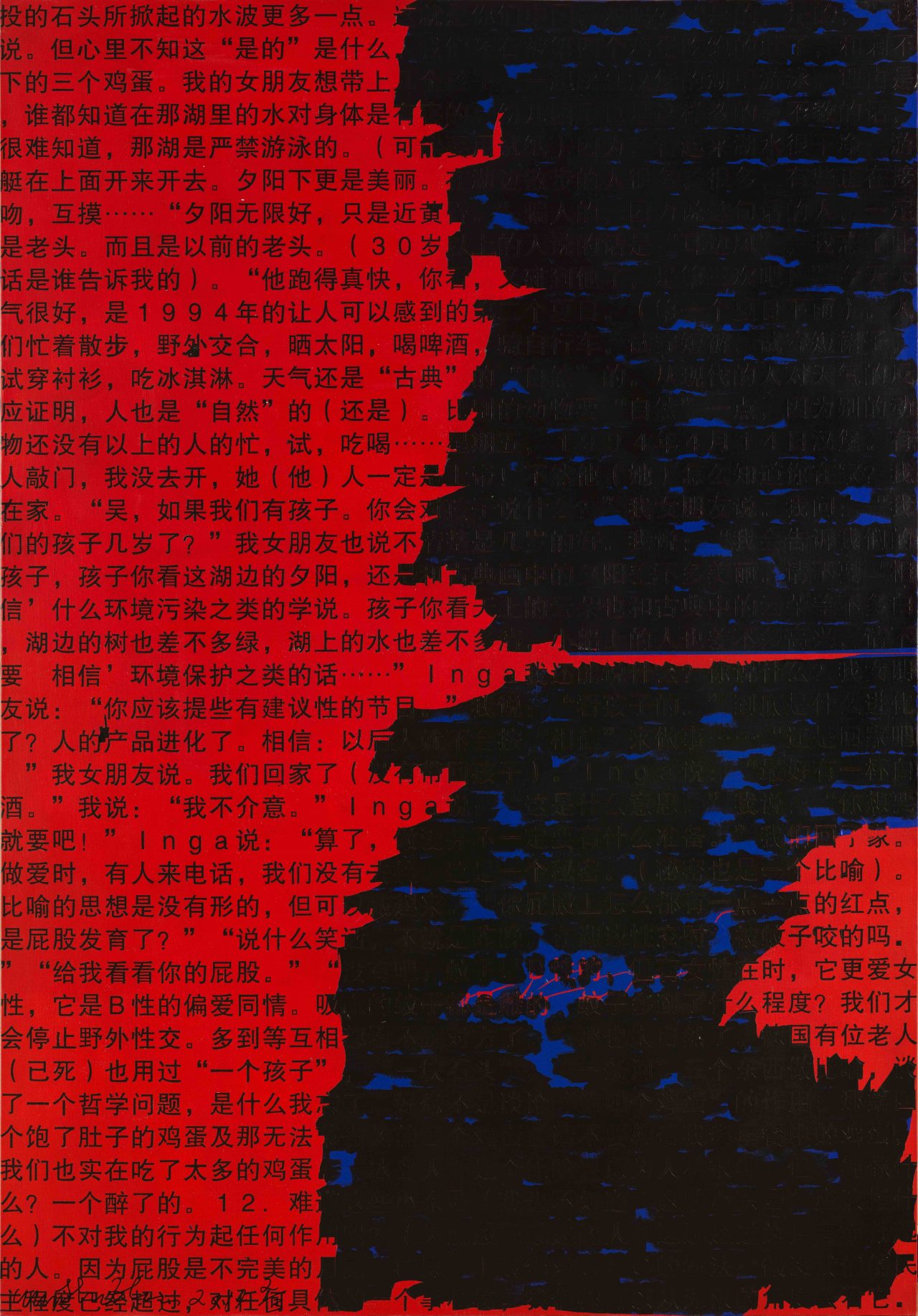Wu Shanzhuan's Grammar (I)
Duration: 1 JULY 12:00 AM - 31 JULY 11:59 AM (CST), 2023

Wu Shanzhuan believes that “methodology of presentation precedes the existence of concept”. Therefore, dealing with the methodology is the true means of re-constructing the concept. In his methodology of “adding brackets” Wu Shanzhuan extends his insertion of meaningless characters to the space between word and word; that is, to the sentence. In accordance with the general rules of grammar, if a word in a sentence is bracketed this word is “loosened” from the sentence series, and its implied connotations become less certain, more illustrative, more supplementary, indeed, to a certain extent, dispensable, retractable. In this way the bracket itself embodies a function of setting the bracketed object/subject — free. Placing a thing in brackets is tantamount to a cancellation of the original function of the thing. But since brackets are added to “all” ready-made things, this demonstrates a rich abundance of possibility.
opening up our thought consciousness
(opening up)(our)(thought) consciousness
(opening up (our) thought consciousness)
opening up () our thought conscious () ness)
(opening up our) (thought consciousness)
The last line above generates one of Wu Shanzhuan's most fantastic creations: if we move the two opposite brackets in the middle of the line continuously closer until they overlap, they form “the perfect bracket” — it produces a surplus of space. This is the space where nothingness is located: the effect of this space is almost as though our consciousness were a letter-press where everything is tightly packed and neatly aligned and ready to print — and suddenly the temperature is increased so that every single metal printing block expands and changes shape. At its most extreme, the significance of this space is as an argument proving the existence of freedom. Perhaps this is the most extreme “World 3?”
--Excerpted from Qiu Zhijie's Wu Shanzhuan's subjects and systems.
About Wu Shanzhuan
Wu Shanzhuan (b. 1960, China). One of the key figures of the '85 New Wave Art Movement in China, Wu Shanzhuan's practice defies use of conventional visual art terms such as "watch," "stare," and "experience" to engage with. Instead, pulling together street smartness, intellectual experimentation and the spirit of the absurd in contemporary art, Wu Shanzhuan and his collaborator Inga Svala Thorsdottir draw you into a world where "read" becomes the key term. They are not creators of visual spectacles, but rather overthrowers and discoverers of truths and propositions, as well as counterfeiters of ideology and interpreters of everyday theology.
Wu Shanzhuan defines himself as criminal, intermediary, tourist and labor. The works Wu Shanzhuan creates are not the granted artworks but rather "Wu's Things". From the large number of "Wu's Things" made in the early 1990s, we see a desire for full opening and "transcending the boundaries" and his obsession with mathematics and logic which brings a strange sense of truth to his works. For a society dictated by a variety of faiths and customs, this is an "adulterated" truth. Wu never tires of quoting from Sartre: "People are a bundle of useless passion." The use for his useless passion is to find "useless truths." For more than 20 years, Wu Shanzhuan has used the forumulas "pseudo-words," "thing's right(s)," "parthenogenesis," "secondhand water," "tourist information," "perfect bracket," and "bird before peace," all of which are "useless truths," to weave his personal ideology. This ideology constitutes a profound critique to the system of concepts and experiences that we are accustomed to.
In the era when conceptual art generally faces a rethink, the works attest a vibrancy of concept and the power of thoughts. It is a rich collection of intriguing humor and sharp wit, spontaneous anti-metaphysical actions, insights into everyday politics, sensitivity to invisible workings of power systems and adherence to the fundamental state of democracy.
Wu Shanzhuan's Grammar (I)
Duration: 1 JULY 12:00 AM - 31 JULY 11:59 AM (CST), 2023

Wu Shanzhuan believes that “methodology of presentation precedes the existence of concept”. Therefore, dealing with the methodology is the true means of re-constructing the concept. In his methodology of “adding brackets” Wu Shanzhuan extends his insertion of meaningless characters to the space between word and word; that is, to the sentence. In accordance with the general rules of grammar, if a word in a sentence is bracketed this word is “loosened” from the sentence series, and its implied connotations become less certain, more illustrative, more supplementary, indeed, to a certain extent, dispensable, retractable. In this way the bracket itself embodies a function of setting the bracketed object/subject — free. Placing a thing in brackets is tantamount to a cancellation of the original function of the thing. But since brackets are added to “all” ready-made things, this demonstrates a rich abundance of possibility.
opening up our thought consciousness
(opening up)(our)(thought) consciousness
(opening up (our) thought consciousness)
opening up () our thought conscious () ness)
(opening up our) (thought consciousness)
The last line above generates one of Wu Shanzhuan's most fantastic creations: if we move the two opposite brackets in the middle of the line continuously closer until they overlap, they form “the perfect bracket” — it produces a surplus of space. This is the space where nothingness is located: the effect of this space is almost as though our consciousness were a letter-press where everything is tightly packed and neatly aligned and ready to print — and suddenly the temperature is increased so that every single metal printing block expands and changes shape. At its most extreme, the significance of this space is as an argument proving the existence of freedom. Perhaps this is the most extreme “World 3?”
--Excerpted from Qiu Zhijie's Wu Shanzhuan's subjects and systems.
About Wu Shanzhuan
Wu Shanzhuan (b. 1960, China). One of the key figures of the '85 New Wave Art Movement in China, Wu Shanzhuan's practice defies use of conventional visual art terms such as "watch," "stare," and "experience" to engage with. Instead, pulling together street smartness, intellectual experimentation and the spirit of the absurd in contemporary art, Wu Shanzhuan and his collaborator Inga Svala Thorsdottir draw you into a world where "read" becomes the key term. They are not creators of visual spectacles, but rather overthrowers and discoverers of truths and propositions, as well as counterfeiters of ideology and interpreters of everyday theology.
Wu Shanzhuan defines himself as criminal, intermediary, tourist and labor. The works Wu Shanzhuan creates are not the granted artworks but rather "Wu's Things". From the large number of "Wu's Things" made in the early 1990s, we see a desire for full opening and "transcending the boundaries" and his obsession with mathematics and logic which brings a strange sense of truth to his works. For a society dictated by a variety of faiths and customs, this is an "adulterated" truth. Wu never tires of quoting from Sartre: "People are a bundle of useless passion." The use for his useless passion is to find "useless truths." For more than 20 years, Wu Shanzhuan has used the forumulas "pseudo-words," "thing's right(s)," "parthenogenesis," "secondhand water," "tourist information," "perfect bracket," and "bird before peace," all of which are "useless truths," to weave his personal ideology. This ideology constitutes a profound critique to the system of concepts and experiences that we are accustomed to.
In the era when conceptual art generally faces a rethink, the works attest a vibrancy of concept and the power of thoughts. It is a rich collection of intriguing humor and sharp wit, spontaneous anti-metaphysical actions, insights into everyday politics, sensitivity to invisible workings of power systems and adherence to the fundamental state of democracy.




